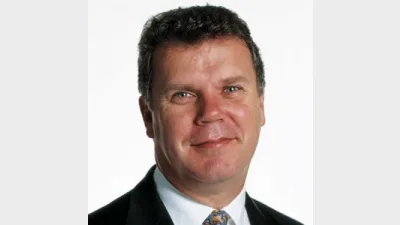Estate planning - key differences between SMSFs and other super funds



MLC's Peter Hogan outlines the key differences between SMSFs and other superannuation funds from an estate planning perspective.
While the tax and super laws that regulate death benefit payments are largely the same for all superannuation funds, there are some important differences that SMSF trustees and advisers need to be familiar with.
Not only can SMSFs offer greater estate planning certainty, there are some unique requirements and limitations.
It's also essential that the fund's governing rules cater for the members' estate planning objectives and the potential beneficiaries' needs and circumstances.
Binding nominations
SMSFs are not subject to many of the requirements that apply to SIS-based binding death benefit nominations.
For example, it's possible for a nomination in an SMSF to bind the trustees to the type of benefit to be paid, as well as who will receive the benefit.
Specific contingencies can also be incorporated into the SMSF's trust deed in a similar way to a Will.
For instance, a member may nominate to leave 50 per cent of their super to their spouse and 50 per cent to their only adult child, and additional clauses can provide that in the event that the spouse dies before the member, 100 per cent will go to the only adult child.
In other words, a contingency can be put in place should part or all of the original nomination fail for some reason.
With other super arrangements, the binding nomination would have to be amended to deal with such an outcome.
Reversionary nominations
Some SMSF trust deeds provide that reversionary beneficiary nominations take precedence over any later nominations, at least in relation to the assets supporting the income stream.
However, other trust deeds provide that a later binding death benefit nomination would override not only earlier binding nominations, but also reversionary nominations.
Care should therefore be taken to fully understand the trust deed provisions before executing a reversionary nomination for an income stream.
Trustee requirements
Unlike other super funds, the executor of the deceased SMSF member's estate can, and usually does, step in and acts as trustee in their place until such time as a death benefit is paid.
Once appointed, the executor takes on full responsibility as a trustee and is subject to the same obligations and liabilities as the other trustees of the SMSF.
This would include deciding how and to whom the death benefit is paid if no legally binding arrangement is in place.
But the same tensions and risks that can occur with Wills and the distribution of an estate can also arise when SMSF trustees have the discretion to decide how and to whom a death benefit will be paid.
This is because the deceased member, surviving member(s) and the executor are often family or run a business together.
To help ensure the payment of the death benefit and general operation of the fund runs smoothly, it's important that the governing rules of the SMSF deal with trustee succession.
This should include the appointment of an executor as trustee if applicable. It should also address the trustees' voting rights if multiple trustees and/or an executor are to be, or could be, appointed following the death of a member.
Trustee succession planning is particularly important in funds where a member would prefer the remaining trustees exercise discretion after their death rather than binding them to any particular course of action.
This need for flexibility could arise, for example, if the member has children whose tax-dependency status could change, or where there are potential creditors or anticipated challenges to the estate.
Dispute resolution options
Disputes regarding decisions and actions that SMSF trustees make in relation to the payment of death benefits cannot be referred to the Superannuation Complaints Tribunal.
Also, while matters can be taken to the Federal or relevant State Supreme Court, it can be difficult to convince the Court to set aside the trustees' decisions. The Katz v Grossman case is a famous example of this situation.
In many cases, the trustees' decisions have been upheld because they had been appropriately appointed, had discretion to determine who would receive the death benefit and paid the money to an eligible dependant.
So long as the decision making process is within the powers given to the trustees in the trust deed and those powers are exercised appropriately, the Courts usually aren't willing to overturn the trustees' decisions.
Anti-detriment payments
While SMSFs can accrue investment earnings in a reserve to pay an anti-detriment amount if the trust deed allows it, it can take years to accumulate sufficient money.
Also, allocations from a reserve in excess of 5 per cent of the member's interest are counted against the concessional contribution cap.
So it can be difficult for most SMSFs to use a reserve to pay an anti-detriment amount without other unfavourable consequences.
Another approach is for the trustees to hold an insurance policy over the life of the members to fund an anti-detriment payment, which is not linked to any members' account.
To do this, the trust deed must provide the trustees with the discretion to use the proceeds to make an anti-detriment payment and not automatically direct the payment to the deceased member's account for payment as part of the death benefit.
However, the downside to providing the trustees with discretion is the premiums for the insurance policy will not be deductible to the fund.
Liquidity issues
Paying a death benefit as a lump sum or income stream as soon as possible after the death of a member can be difficult in SMSFs with large bulky assets that are hard to divide, such as business real property or residential property which represent a significant percentage of the fund's assets.
Additional complications can arise in SMSFs that have used a limited recourse borrowing arrangement to purchase the property, as the loan will also need to be serviced or repaid.
Peter Hogan is manager of SMSF Advice at MLC.
Originally published on SMSF Essentials.
Recommended for you
ASIC has commenced civil penalty proceedings in the Federal Court against superannuation trustee Diversa Trustees, regarding the First Guardian Master Fund.
The winners have been announced for the 2025 Super Fund of the Year Awards, held in Melbourne on 26 November by Money Management's sister brand Super Review.
Data and technology provider Novigi has acquired Iress’ superannuation consulting and managed services business from Apex Group.
AMP is to launch a digital advice service to provide retirement advice to members of its AMP Super Fund, in partnership with Bravura Solutions.










